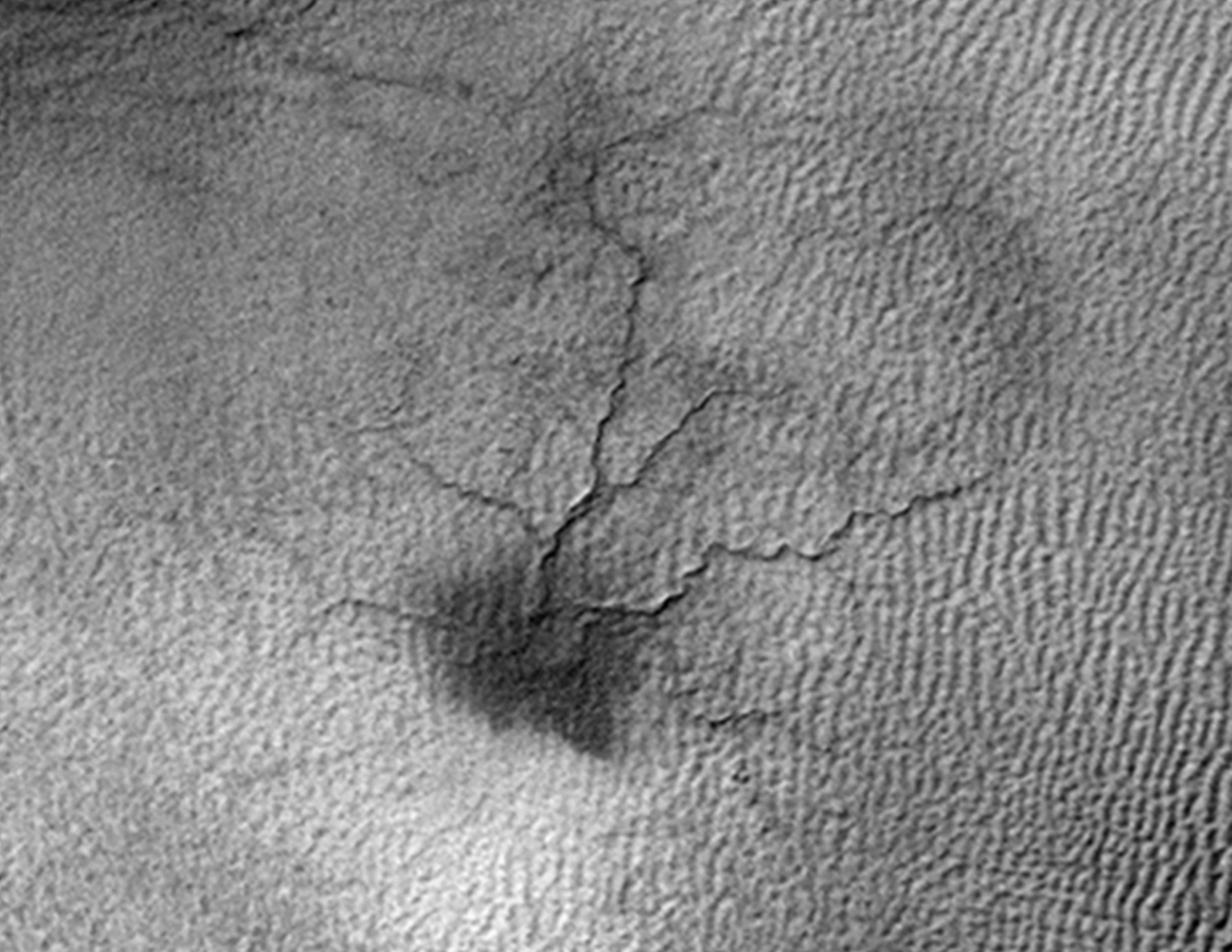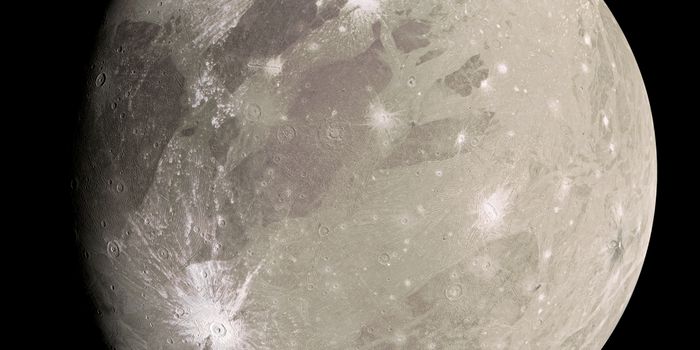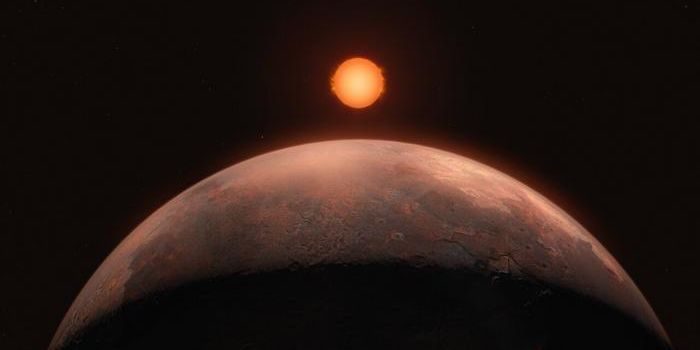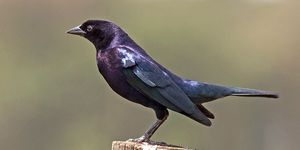NASA Observes Cumulative Growth of Martian "Spiders" for the First Time
Using the Mars Reconnaissance Orbiter (MRO), NASA has, for the first time, been able to observe the cumulative growth of large Martian “spiders” over the course of three Martian years, each of which last 1.9 Earth years. The latest findings appear in the journal Icarus.
Although we’ve seen similar structures to these, many of which were much larger, on the red planet before and understand pretty well how they’re formed, NASA has never really had the opportunity to see their growth over time, making this a significant observation.
Image Credit: NASA
We understand many of these smaller formations may have the ability to grow into larger spider-like formations over extended periods of time thanks to the effects of thawing carbon dioxide (dry ice, which occurs naturally on Mars unlike on Earth) on the red planet during the Winter season. This process may take up to 1,000 Martian years.
After the ice melts, it produces a carbon dioxide gas, which erodes the ground around it as it escapes to the surface. It escapes through cracks, which occur from the build-up of pressure. This very same pressure is responsible for launching particles into the air, which are then replaced by new particles that give it this dark appearance.
There are numerous exhibits of these “spiders” all over the Southern pole region of Mars, but they don’t seem to form anywhere else on the red planet. They are large enough to be picked up by satellite imagery, ranging from tens to hundreds of yards in size.
They’re referred to as “spiders” because of their unique shape; at the center of each is what appears to be a globular body, and then spanning from the center in omnidirectional formations are branches that look like spider legs.
According to the research, these formations only appear in the sand dunes of the South, which suggests that the sand dunes, in addition to the climate, play a role in their unique formation.
"We have seen for the first time these smaller features that survive and extend from year to year, and this is how the larger spiders get started," said Ganna Portyankina of the University of Colorado, Boulder and the lead author of the Icarus study. "These are in sand-dune areas, so we don't know whether they will keep getting bigger or will disappear under moving sand."
Sand dunes are made up of loose sand, and they likely play a role in the create and destroy process of these spider-like structures. They have the right conditions to form them, but because of their looseness, sand that gets blown over the structures can easily cover them up.
The North pole and the South pole each have their fair share of loose sandy dunes, but the North reportedly has looser sand, which isn’t optimal for making these structures. The South pole has loose sand also, but because it’s a little more structurally sound, it prevents nearby sand from simply re-filling the cracks when they’re formed.
If it weren’t for the Mars Reconnaissance Orbiter, observations such as these would not be possible. If we’re ever going to colonize Mars, we will have to do our best to better understand how the red planet works, and every discovery we make helps us get closer to unlocking the secret behind Mars.
Source: NASA









